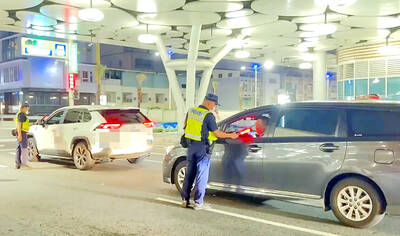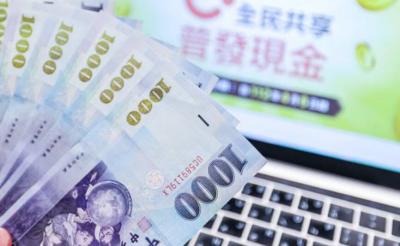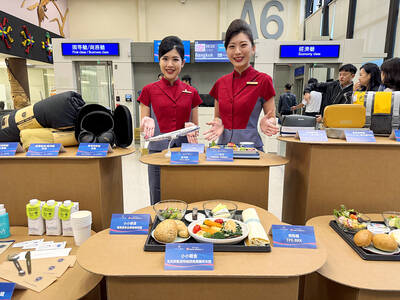As the world faces food shortages, a Taiwan-based international research institute is seeking to alleviate malnutrition and poverty in developing counties by improving the production and consumption of vegetables.
Since its founding in 1971 in Shanhua Township (善化) in Tainan County, the Asian Vegetable Research and Development Center (AVRDC) — the World Vegetable Center — has changed the lives of millions of farmers in Asia and Africa by teaching them how to grow, store and transport vegetables as well as how to cook them.
Over the past 37 years, the AVRDC has seen its size and role expand rapidly as improved vegetable production helped reduce malnutrition and poverty.
“We are not trying to use vegetables as a substitute for [other] food, but rather as an addition to the food basket, to help farmers become better nourished and grow out of poverty,” said the center’s director, Dyno Keatinge.
Malnutrition represents a serious global problem. According to figures released by the WHO, 2 billion to 3.5 billion people suffer from malnutrition and 1.1 billion people are underweight.
By improving vegetable production and raising yields, nutrition levels can be improved while allowing farmers to make more money by growing and selling better vegetables, Keatinge said.
As a non-profit organization, it gets funding from dozens of governments and foundations, which this year totaled US$18 million, to operate regional centers in Thailand, Tanzania and India. AVRDC also plans to open a regional center in Central America.
One main task for the center is to gather germplasms — seeds or plant culture — of indigenous vegetables from around the world and store them so they won’t become extinct. So far, AVRDC has stored 56,136 germplasms from 150 countries.
Germplasms are planted at the center to record their growth and characteristics for long-term storage — up to 100 years.
Thousands of species of indigenous vegetables exist in the world, providing important nutrition to people in developing countries, said Lin Li-ju of the AVRDC’s international cooperation unit, pointing to the plots of land and greenhouses where the plants had been grown.
“Take sweet potato shoots and leaves for example, they were the poor men’s diet or pig feed in Taiwan in the past. But in recent years they have become a popular dish in households and even at banquets because they are high in vitamin A, [vitamin] E and iron,” she said.
AVRDC researchers are also experimenting with natural crossing to improve the quality of vegetables and to make them pest and heat-resistant. Genetic engineering was monitored at the center but not actively pursued, officials said.
Peter Hanson, a plant breeder, held up a plate of egg-sized yellow tomatoes, the result of several years of research.
“This Golden Tomato contains three to six times more beta carotene, which is the precursor to vitamin A. A single improved tomato like this can provide all your daily vitamin A needs,” he said, popping a Golden Tomato into his mouth.
AVRDC also teaches farmers in Asia and Africa how to irrigate vegetable plots, pack and transport vegetables or preserve them.
Research shows post-harvest loss can be up to 50 percent if the product is not transported properly, resulting in a waste of produce and a loss of income for farmers.
Often very simple actions can have great effects.
“In many countries, farmers hand over tomatoes to collectors who load the tomatoes onto carts or trucks. By the time the produce has reached the destination, the tomatoes at the bottom are crushed,” AVRDC socioeconomist Katinka Weinberger said.
“We teach the farmers to separate green tomatoes from red ones, pack them into bags and put green tomatoes at the bottom and red ones on top. As a result, the farmers have cut down post-harvest waste and get a higher price for their tomatoes,” she said.
AVRDC researchers also try to change farmers’ harvest and storage habits, so that vegetables can be delivered to the market speedily and in good shape.
“In some countries, farmers harvest vegetables around noon and let the vegetables sit under the sun while they wait for the collector. The collectors arrive by 5pm or 6pm. By the time the vegetables have reached the market, they are no longer fresh,” Weinberger said.
“We advise them to harvest vegetables at dawn when it is cool. While waiting for the collectors, we teach them how to keep the vegetables cool. That is, they can put a soaked sack on top of the packed vegetables. That can bring down the temperature by a few degrees,” she said.

TRAFFIC SAFETY RULES: A positive result in a drug test would result in a two-year license suspension for the driver and vehicle, and a fine of up to NT$180,000 The Ministry of Transportation and Communications is to authorize police to conduct roadside saliva tests by the end of the year to deter people from driving while under the influence of narcotics, it said yesterday. The ministry last month unveiled a draft of amended regulations governing traffic safety rules and penalties, which included provisions empowering police to conduct mandatory saliva tests on drivers. While currently rules authorize police to use oral fluid testing kits for signs of drug use, they do not establish penalties for noncompliance or operating procedures for officers to follow, the ministry said. The proposed changes to the regulations require

The Executive Yuan yesterday announced that registration for a one-time universal NT$10,000 cash handout to help people in Taiwan survive US tariffs and inflation would start on Nov. 5, with payouts available as early as Nov. 12. Who is eligible for the handout? Registered Taiwanese nationals are eligible, including those born in Taiwan before April 30 next year with a birth certificate. Non-registered nationals with residence permits, foreign permanent residents and foreign spouses of Taiwanese citizens with residence permits also qualify for the handouts. For people who meet the eligibility requirements, but passed away between yesterday and April 30 next year, surviving family members

China Airlines Ltd (CAL) yesterday morning joined SkyTeam’s Aviation Challenge for the fourth time, operating a demonstration flight for “net zero carbon emissions” from Taiwan Taoyuan International Airport to Bangkok. The flight used sustainable aviation fuel (SAF) at a ratio of up to 40 percent, the highest proportion CAL has achieved to date, the nation’s largest carrier said. Since April, SAF has become available to Taiwanese international carriers at Taipei International Airport (Songshan airport), Kaohsiung International Airport and Taoyuan airport. In previous challenges, CAL operated “net zero carbon emission flights” to Singapore and Japan. At a ceremony at Taoyuan airport, China Airlines chief sustainability

‘ONE CHINA’: A statement that Berlin decides its own China policy did not seem to sit well with Beijing, which offered only one meeting with the German official German Minister for Foreign Affairs Johann Wadephul’s trip to China has been canceled, a spokesperson for his ministry said yesterday, amid rising tensions between the two nations, including over Taiwan. Wadephul had planned to address Chinese curbs on rare earths during his visit, but his comments about Berlin deciding on the “design” of its “one China” policy ahead of the trip appear to have rankled China. Asked about Wadephul’s comments, Chinese Ministry of Foreign Affairs spokesman Guo Jiakun (郭嘉昆) said the “one China principle” has “no room for any self-definition.” In the interview published on Thursday, Wadephul said he would urge China to